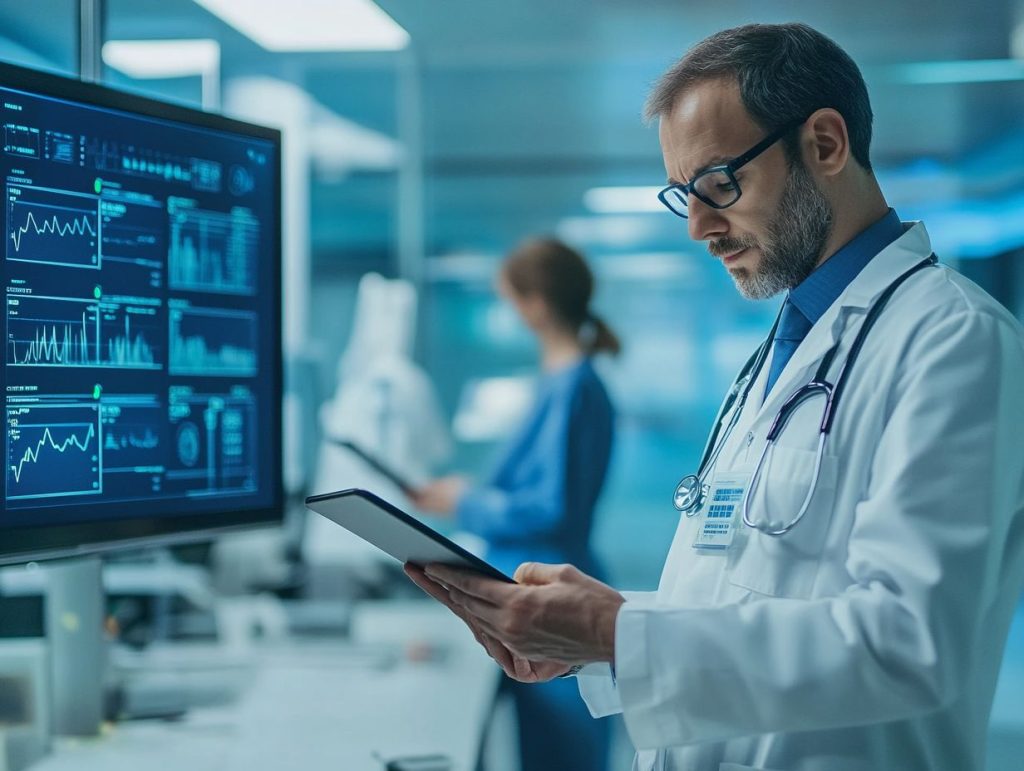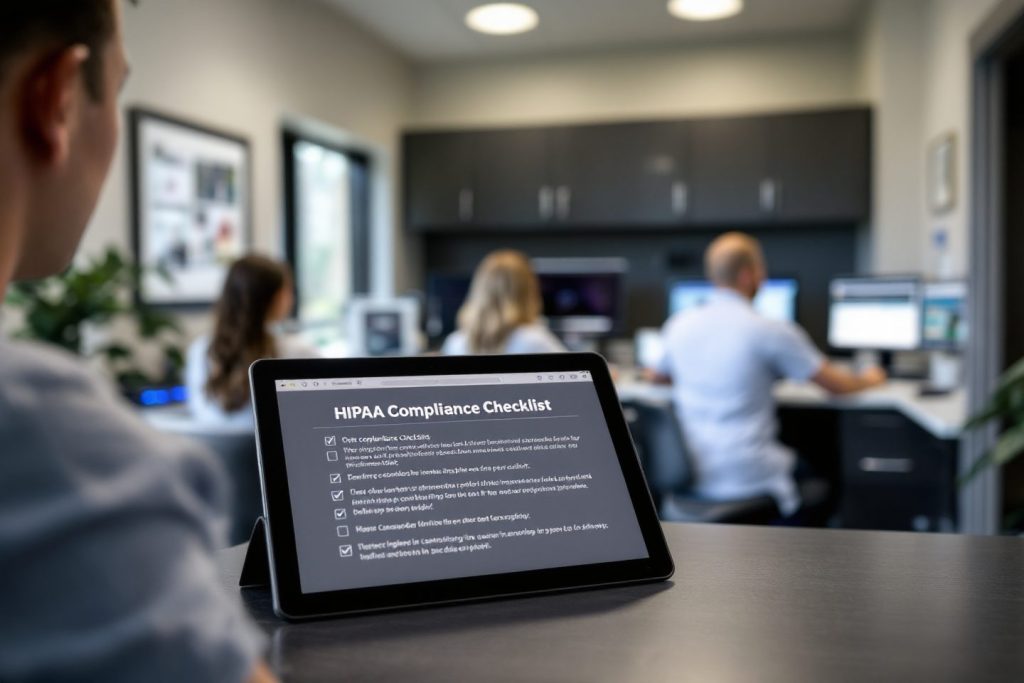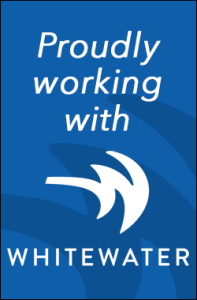IT Tools That Improve Operational Efficiency in Healthcare

Healthcare must be efficient. Operational efficiency is vital. Innovative IT tools, like Electronic Health Records (EHR) and telemedicine, are changing how providers manage patient care and resources. This article looks at key technologies that boost efficiency. These include inventory management systems and data analytics.
IT tools play a vital role in boosting efficiency within healthcare. By streamlining processes and enhancing patient outcomes, they enable organizations to allocate resources more effectively.
IT Tools for Improving Operational Efficiency

IT tools improve efficiency in healthcare. They help organizations streamline processes, improve patient outcomes, and allocate resources better.
These tools include cloud computing, healthcare information systems, and digital health tools. They improve communication, manage healthcare data, and engage patients.
As healthcare technology evolves, the integration of these IT tools is crucial for adapting to changes in care delivery models and ensuring compliance with regulatory standards.
Definition and Importance
Operational efficiency refers to the capacity of healthcare organizations to deliver high-quality patient care while minimizing waste and optimizing resource utilization through effective IT infrastructure and healthcare technology. This concept is essential, as it not only enhances the overall healthcare experience for patients but also drives significant cost reductions and improves performance metrics across various departments within a facility.
Achieving operational efficiency involves prioritizing patient safety. Streamlined processes and consistent service delivery are key. Advanced technologies like electronic health records (EHRs) and telemedicine improve communication among healthcare providers. This facilitates timely interventions and better patient outcomes.
Operational efficiency is closely aligned with healthcare compliance, as organizations can more effectively adhere to regulatory requirements while fostering accountability and transparency. For example, use real-time data analytics to monitor clinical guidelines. This helps staff find areas for improvement quickly.
Ultimately, using technology to meet benchmarks makes healthcare more effective. It addresses patient needs and keeps organizations competitive. Leveraging technology to meet operational benchmarks results in a more effective healthcare system that not only addresses patient needs but also maintains a competitive edge in an ever-evolving landscape.
Electronic Health Records (EHR)
Electronic Health Records (EHR) are digital versions of patients’ paper charts. They offer real-time access to patient information and enhance communication and coordination among healthcare providers. They streamline patient records, improve data security, and help comply with healthcare regulations.
Through seamless integration with other healthcare information systems, EHR enhances the capability to share critical patient data across various departments and facilities. This interconnectedness promotes better care coordination, enabling healthcare providers to collaborate more effectively, track patient progress, and make informed decisions rapidly.
Features such as appointment scheduling, automated reminders, and patient portals not only enhance operational efficiency but also encourage greater patient engagement and empower individuals to take an active role in their health journey through effective patient access solutions.
Ultimately, these advanced tools contribute to higher quality care and improved health outcomes, as patients benefit from more personalized and timely interventions.
Telemedicine
Telemedicine uses telecommunications technology to deliver remote consultations and healthcare services. This enhances patient access and engagement while improving healthcare productivity. This innovative model enables healthcare providers to offer services such as remote monitoring and follow-up care, which significantly enhance patient outcomes and satisfaction.
By improving the coordination of patient care, telemedicine reduces the necessity for in-person visits, subsequently lowering travel costs for patients and making healthcare more accessible. This approach is especially advantageous for individuals in rural or underserved areas, where access to specialists may be limited.
Telemedicine helps solve healthcare compliance and resource allocation challenges. It provides real-time data and improves communication among providers.
Inventory Management Systems

Inventory management systems are essential IT tools that enhance the tracking and management of medical supplies and equipment within healthcare organizations, significantly influencing supply chain management and resource utilization. Optimizing these processes helps healthcare facilities improve operations. It ensures essential items are available and enhances patient care.
These systems are vital for workflows by providing real-time visibility into inventory levels and usage.
The analytical capabilities of these systems help organizations make data-driven decisions. They provide insights that improve performance. Consequently, the integration of robust inventory management tools not only increases efficiency but also enhances overall service quality, positively impacting both healthcare outcomes and patient experiences.
Data Analytics and Business Intelligence
Data analytics and business intelligence analyze healthcare data. They uncover trends and insights that improve performance and efficiency.
Predictive analytics empowers healthcare organizations to make informed decisions. This positively impacts patient outcomes and resource use.
Through the integration of data from various sources, including electronic health records and patient management systems, these organizations can streamline their processes, ensuring that operational best practices are not merely theoretical but are practically enhanced.
The insights derived from data analytics are also essential in clinical decision support, equipping healthcare professionals with the necessary information to make accurate diagnoses, develop effective treatment plans, and enhance patient-centric care.
Strategic planning is significantly enhanced by the visualization of data, as it allows stakeholders to easily identify patterns and trends. Additionally, real-time reporting ensures that necessary adjustments can be made swiftly to address patients’ evolving needs.
Benefits and Challenges of Implementing IT Tools and Health Technology in Healthcare
The implementation of IT tools in healthcare offers numerous benefits and challenges. The key advantages include improved operational efficiency, enhanced patient engagement, and substantial cost reductions.
However, organizations face challenges like technology adoption, staff training, and data security concerns. These challenges can hinder tool integration.
Improved Efficiency and Cost Savings
Improved efficiency and cost savings are key benefits of using IT tools in healthcare. These tools enable facilities to streamline operational workflows and enhance overall productivity within the healthcare sector.
By automating processes and optimizing resource utilization, healthcare organizations can achieve superior performance metrics and ultimately reduce costs.
For instance, electronic health records (EHR) systems greatly diminish the time required for patient documentation, allowing clinicians to dedicate more attention to patient care instead of administrative duties. Telemedicine platforms facilitate remote consultations, thereby reducing travel expenses for both patients and providers.
Additionally, intelligent data management, like predictive analytics, improves decision-making. It provides insights into patient trends and resource use. Consequently, clinicians can proactively address potential health issues before they necessitate costly interventions, ultimately resulting in improved patient outcomes and decreased operational expenses across the board.
Training and Adoption Challenges

Training and adoption challenges are major barriers to implementing healthcare IT tools. Staff must receive adequate training to use these technologies effectively. User satisfaction and a culture of technology adoption are key to overcoming these obstacles. They help realize the full potential of healthcare technology.
Comprehensive staff training programs, including training and support tools, are essential. They equip employees with the skills and knowledge to confidently use new systems. Involving stakeholders throughout the implementation phase is vital, as their insights can enhance the training experience, address potential resistance, and ensure system usability.
For example, hospitals that successfully implemented electronic health record systems (EHR) often credit their success to early and ongoing engagement with clinical and administrative staff. This leads to tailored training sessions that meet users’ needs and improve workflow. Organizations can use hybrid training methods that combine in-person and digital tools, including mobile health applications. This accommodates diverse learning preferences and promotes ongoing development.
Frequently Asked Questions
What are some examples of IT tools that improve operational efficiency in healthcare, such as healthcare IT and IT infrastructure?
Examples include electronic health records, telemedicine, patient portals, inventory management systems, and data analytics software.
How do electronic health records improve operational efficiency in healthcare, considering health IT standards and interoperability standards?
Electronic health records allow easy and secure sharing of patient information between healthcare providers. This reduces duplicate tests and paperwork. It streamlines communication and coordination, improving overall efficiency.
Can telemedicine help improve operational efficiency in healthcare through telehealth solutions and remote patient care?
Yes, telemedicine allows remote consultations. This reduces the need for in-person appointments and wait times. It can improve overall efficiency and patient satisfaction.
What is the role of patient portals in improving operational efficiency in healthcare and enhancing patient engagement using healthcare communication tools?
Patient portals let patients access their medical records, schedule appointments, and communicate with healthcare providers. This reduces administrative tasks and improves patient engagement and self-management.
How can inventory management systems improve operational efficiency in healthcare and contribute to effective resource management?
Inventory management systems track medical supplies and equipment. This reduces waste and ensures necessary items are always in stock, improving efficiency and reducing costs.
What is the importance of data analytics software in improving operational efficiency in healthcare, including healthcare analytics and clinical analytics?
Data analytics software helps identify patterns and trends in patient data. This allows for better resource allocation and decision-making, ultimately improving operational efficiency in healthcare.



